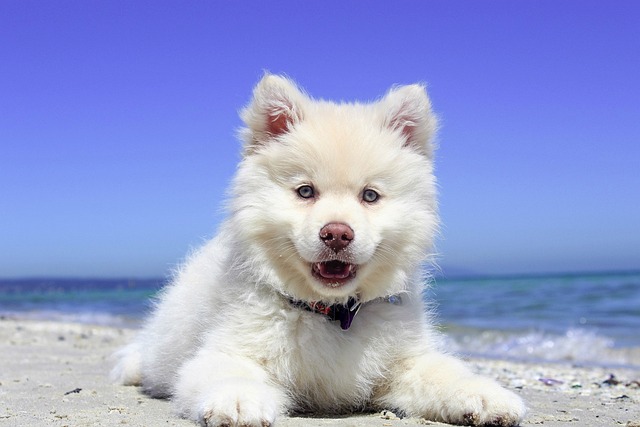
How do i train my dog to be obedient?
Watching your dog dart across the park ignoring your calls isn’t just frustrating—it can put them at risk near busy streets or public spaces.
If you’re a new dog parent in the US—maybe you’re gripping your leash tight as your 1-year-old German Shepherd mix, Duke, barks and lunges at every passing dog during walks in your Boston neighborhood, or you’ve had to rush your skittish Pomeranian, Lila, away from delivery workers in Texas because she growls and hides—you’ve probably wondered: What training actually works for a reactive dog? Reactive dogs aren’t “aggressive” or “bad”; they’re usually scared, overstimulated, or feeling threatened, and the right training helps them feel safe instead of lashing out. Let’s break this down simply, with science, easy steps, and how to stay aligned with local pet rules.
First, let’s get the science straight: Reactive behavior (barking, lunging, growling) happens when a dog’s brain hits “fight-or-flight” mode—they think the thing they’re reacting to (another dog, a stranger, a loud bike) will hurt them, so they act out to protect themselves. The best training for this is desensitization and counterconditioning (DS/CC)—fancy terms for “slowly getting them used to the scary thing while giving them something great.” Here’s how it works: Instead of forcing them to “face their fear,” you keep the scary thing far enough away that they don’t react (this is called the “threshold”), then pair that thing with a high-value reward (like tiny pieces of cooked chicken). Over time, their brain starts to think, Oh, that dog isn’t scary—it means I get treats! Take Maria, a first-time owner in California: Her 2-year-old Rescue Beagle, Max, would bark nonstop at other dogs. She started walking him in a quiet park, keeping 50 feet away from other pups, and gave him a treat every time he looked at a dog without barking. After 6 weeks, Max could walk within 20 feet of other dogs without reacting—he’d even wag his tail.

Here’s how to do DS/CC at home (and on walks), step by step: Start by identifying your dog’s trigger—Is it other dogs? Strangers? Loud noises? Then find their threshold: For example, if your dog reacts to other dogs at 30 feet, stay at 40 feet where they’re calm. Bring super smelly treats (freeze-dried salmon or peanut butter bites work best—something they’ll drop everything for). When the trigger appears (say, a neighbor’s dog walks by), say “Good boy/girl” in a soft voice and give them a treat immediately. If they start barking or lunging, don’t scold them—scolding only makes them more anxious (and goes against US animal welfare norms that ban punishment). Instead, calmly walk away to a quieter spot and try again later. For apartment living (common in NYC or Chicago), practice with triggers you can control: Play a recording of doorbells at a low volume while giving treats, or have a friend stand outside your door (at a safe distance) and reward your dog for staying calm. Keep sessions short—5 to 10 minutes max—so your dog doesn’t get frustrated.
Now, let’s tie in rules and community habits that matter. Every US state requires core vaccines (distemper, parvovirus, etc.)—before you take your reactive dog to public spaces (even quiet parks), make sure their shots are up to date. Skipping vaccines isn’t just risky for their health; it could get you fined $150 or more in Florida or New York. When walking your reactive dog, always use a short leash (4-6 feet) to keep them close—this helps them feel secure and prevents them from lunging at triggers (it’s also good community etiquette). Always clean up their poop, even if you’re in a hurry to avoid a trigger—cities from Seattle to Miami have fines up to $300 for leaving waste, and it shows respect for your neighbors. In apartments, practice training during quiet hours (like weekday mornings) so your dog’s barking (if they slip up) doesn’t disturb neighbors. And if you see another dog or person coming, cross the street or step into a doorway—giving your dog space is part of being a responsible reactive dog owner.
Training a reactive dog takes time—some days will feel like progress, others like steps back. But with DS/CC, patience, and follow-through on local rules, you’ll help your dog feel calmer and more confident. Remember: The goal isn’t to “fix” them—it’s to help them navigate the world without fear.

Watching your dog dart across the park ignoring your calls isn’t just frustrating—it can put them at risk near busy streets or public spaces.

New puppy owners often find themselves rushing to clean up accidents before they set in, and that’s where puppy pad training becomes a game-changer.

If you've noticed your dog's waistline disappearing and your veterinarian has mentioned those few extra pounds, your first instinct might be to simply reduce the amount of food in their bowl.

Training a dog to use a designated spot indoors isn’t as daunting as many new owners fear, but it does take consistency and an understanding of your pet’s needs.

That moment of dread on a walk is all too familiar for many new dog owners. You see another dog approaching down the sidewalk of your neighborhood

If the sight of another dog on your neighborhood walk makes your heart sink as your own dog erupts into a frenzy of barking and lunging, you're not alone.